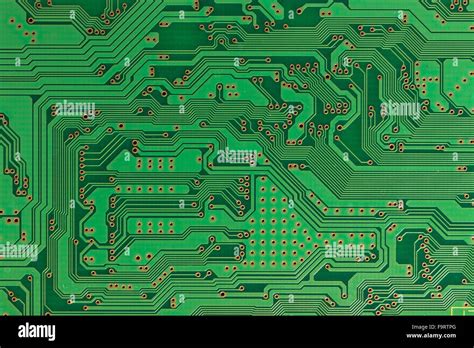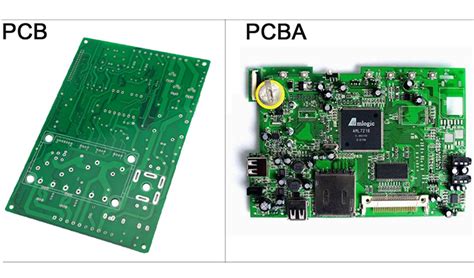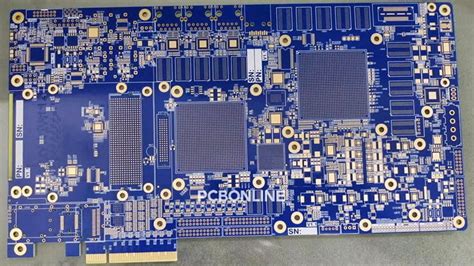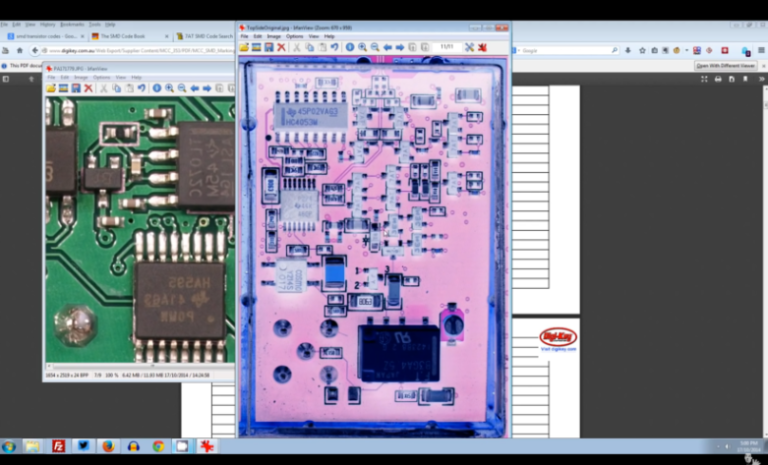Understanding Bare Printed Circuit Boards and Their Applications
Key Takeaways
Understanding bare printed circuit boards (PCBs) is crucial when delving into the field of electronics. These boards serve as the backbone of virtually every electronic device, enabling connectivity and functionality. When you look at the pcb manufacturing landscape, you will notice a wide range of pcb manufacturing companies that specialize in producing high-quality bare PCBs. The complexity of this process lies not only in the assembly but also in the selection of materials and technology used. The pcb manufacturing cost can vary significantly depending on factors such as design intricacy, material quality, and production volume. It’s essential to consider these aspects if you are contemplating entering the pcb manufacturing business or choosing a supplier for your next project. In this rapidly evolving sector, awareness of current trends and cost factors will help you make informed decisions that can impact the performance and reliability of your electronic systems.
Understanding the Basics of Bare Printed Circuit Boards
A bare printed circuit board (PCB) serves as a crucial foundation for modern electronic devices, functioning as the backbone that connects various electronic components. As you explore the realm of PCB manufacturing, it’s essential to understand how these boards are structured and designed. Typically, a bare PCB consists of a flat sheet of electrical insulating material onto which conductive pathways are etched or printed. These pathways serve as the electrical connections amongst components, allowing for functionality and efficiency in your devices.
The manufacturing of these bare boards can vary greatly depending on the specific needs of your project and can influence factors surrounding PCB manufacturing costs. Each manufacturer may employ different techniques and materials that impact both performance and pricing. By delving into various PCB manufacturing companies, you can discover how their unique processes shape the quality and cost-effectiveness of their products.
In the fast-paced world of electronics, understanding the basics of bare PCBs is vital for anyone interested in launching a PCB manufacturing business or enhancing their existing product line. By mastering these foundational elements, you ensure that your designs are efficient and meet industry standards.
If you’re interested in learning more about bare PCBs and their impact on electronics, consider resources from industry leaders like Andwin PCB. Grasping these fundamentals will equip you with insights needed to navigate this essential facet of modern technology.
The Structure of Bare Printed Circuit Boards
Understanding the structure of bare printed circuit boards (PCBs) is essential for anyone involved in the pcb manufacturing process. At their core, these boards consist of a dielectric substrate, typically made from materials such as FR-4 or CEM-1, which provides mechanical support and insulation. On this substrate, conductive pathways or traces are etched, generally from copper, to connect various electronic components. This intricate arrangement is vital as it dictates the routing and functionality of the PCB.
Moreover, the thickness of these boards can vary depending on the specific requirements of your project; thinner boards are often used in mobile devices to save space and weight. Understanding how different pcb manufacturing companies approach this aspect can give you insights into potential pcb manufacturing costs associated with varying sizes and materials.
The layers also play a crucial role: single-layer PCBs are simpler and cheaper to produce, while multi-layer PCBs allow for more complex circuitry but at increased costs. When considering your pcb manufacturing business, brainstorming on how structural choices affect both performance and pricing can be invaluable. The structural integrity achieved through precise pcb manufacturing will not only affect device performance but also the overall reliability of electronics in various applications. By comprehensively understanding these elements, you can better evaluate options when sourcing or designing for your pcb manufacturing needs.
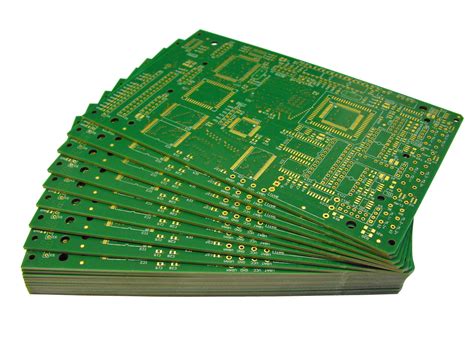
Manufacturing Processes for Bare Printed Circuit Boards
The manufacturing processes for bare printed circuit boards (PCBs) are complex and require precision at every step. Initially, the pcb manufacturing process begins with the selection of the base material, typically a flexible or rigid substrate, which is then treated to remove any contaminants. This ensures optimal adhesion of subsequent layers. After that, your chosen pcb manufacturing companies will employ photolithography, a process where a photoresist layer is applied and then exposed to UV light through a mask of the desired circuit pattern.
Next, the exposed areas are developed to reveal the copper layer beneath, which will form the electrical pathways. The excess copper is etched away using chemical solutions, leaving behind the essential circuit design. It’s crucial to pay attention to this stage, as inaccuracies can lead to increased pcb manufacturing costs if corrections are needed later.
Once your PCB design is ready, it undergoes various inspections and quality checks to ensure it meets industry standards. Many manufacturers utilize automated optical inspection (AOI) systems at this phase. After validation, layers are laminated together if multi-layer boards are being produced.
Here’s a simple overview of key stages in PCB manufacturing:
| Stage | Description |
|---|---|
| Material Selection | Choosing appropriate substrates for PCB production |
| Photolithography | Applying and exposing photoresist for pattern creation |
| Copper Etching | Removing unwanted copper to form conductive paths |
| Quality Inspection | Verifying each board meets strict quality standards |
“Attention to detail in each phase of PCB production can significantly reduce both time and costs.”
In conclusion, understanding these foundational steps in pcb manufacturing business helps you comprehend not only how bare printed circuit boards are made but also highlights their importance in ensuring the functionality of modern electronic devices. Each decision in this process can influence overall production efficiency and costs, making it essential for you as an industry participant or customer to appreciate these intricacies.
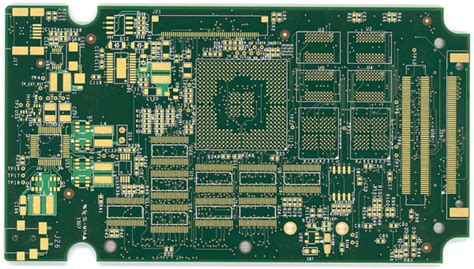
Key Materials Used in Bare Printed Circuit Boards
The key materials utilized in bare printed circuit boards (PCBs) play a crucial role in their performance and durability. At the core of most PCBs is the substrate material, typically made from fiberglass, which offers excellent structural integrity and thermal stability. Another frequently used material is epoxy resin, known for its resistance to heat and moisture, enhancing the board’s longevity. Conductive materials, such as copper, are vital for creating the pathways that allow electrical signals to flow across the board. In your exploration of pcb manufacturing, you may also encounter advanced materials like polyimide and PTFE, which are designed for specific applications where high performance is essential.
When considering options from various pcb manufacturing companies, it’s important to note that the choice of materials can significantly influence the overall pcb manufacturing cost. Quality materials often lead to better signal integrity and less heat generation, offering a longer lifespan at a potentially higher upfront investment. Therefore, if you are contemplating starting your own pcb manufacturing business, understanding these material properties will be pivotal in selecting suppliers and delivering reliable products that meet market demands.
Additionally, additives such as solder mask or surface finish products also contribute to the board’s functionality by providing protection against oxidation and environmental factors. Keeping these critical factors in mind will enable you to make informed decisions in your journey through the electronics industry, ensuring that your products meet both performance standards and customer expectations.
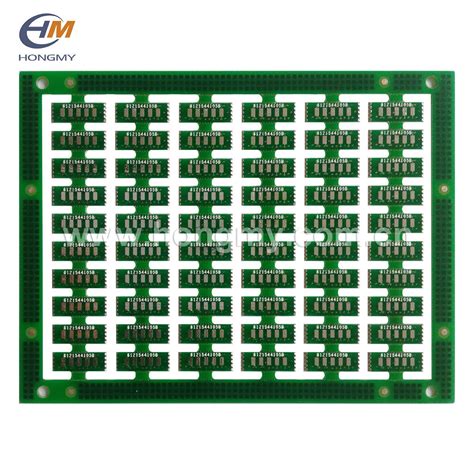
Applications of Bare Printed Circuit Boards in Electronics
Bare printed circuit boards (PCBs) serve as the backbone of countless electronic devices, playing a vital role in their functionality and reliability. With the increasing prevalence of technology in everyday life, the spectrum of applications for bare PCBs has expanded significantly. You may encounter these versatile components in consumer electronics like smartphones and laptops, where they facilitate complex connections between various components. In industrial settings, bare PCBs are essential for controlling machinery and equipment, ensuring efficient operation and minimizing downtime. Moreover, medical devices heavily rely on these boards for critical functions, where accuracy and dependability are paramount. As you explore the realm of pcb manufacturing, understanding how these boards are integrated into various applications can provide insights into the pcb manufacturing cost, process efficiency, and potential partnerships with reputable pcb manufacturing companies. With innovative advancements in technology, the demand for high-quality bare PCBs continues to rise, solidifying their status as indispensable elements in the ever-evolving landscape of electronic devices. By recognizing the importance of bare printed circuit boards in both consumer and industrial applications, you can better appreciate their role within the larger context of your pcb manufacturing business strategy.
Advantages of Using Bare Printed Circuit Boards
The choice to use bare printed circuit boards (PCBs) in electronic design comes with numerous advantages that enhance both functionality and efficiency in your projects. One of the primary benefits is the cost-effectiveness associated with pcb manufacturing. By opting for bare boards, you can significantly reduce overall expenses, especially when ordering in bulk from reputable pcb manufacturing companies. The streamlined production processes often result in lower pcb manufacturing costs, allowing businesses to allocate resources more effectively.
Moreover, bare PCBs provide a high degree of versatility, enabling you to customize designs tailored to your specific requirements without compromising quality. This flexibility not only accelerates the development cycle but also supports innovation within your pcb manufacturing business. With careful consideration of material and component choices, bare PCBs can also exhibit improved performance characteristics such as thermal management and signal integrity.
In addition, using bare printed circuit boards simplifies assembly processes, making it easier for you to integrate components efficiently and accurately. This leads to fewer errors during assembly and contributes to a more reliable final product. Overall, the advantages of utilizing bare PCBs extend beyond cost and customization; they enhance operational efficiencies that can significantly impact your business’s success in a competitive market.
Future Trends in Bare Printed Circuit Board Technology
As technology advances, the landscape of bare printed circuit board (PCB) technology is evolving, showcasing promising future trends that could revolutionize the pcb manufacturing process. One exciting development is the push towards increased automation within pcb manufacturing companies, which can lead to more efficient production lines and a substantial reduction in pcb manufacturing costs. Automation not only enhances precision but also allows for quicker turnaround times, making it feasible for businesses to adapt to market demands swiftly.
Another trend is the growing emphasis on sustainable materials and practices within the pcb manufacturing business. As environmental concerns continue to gain traction, manufacturers are exploring alternatives that minimize waste and use eco-friendly substances without compromising quality. This shift towards sustainability is not merely a trend but a necessity for companies aiming to establish long-term viability and social responsibility.
Additionally, advancements in technology are allowing for more complex designs and greater functionality within smaller sizes of PCBs. You may find that innovations such as flexible PCBs and 3D printing techniques are paving the way for new applications across various fields including consumer electronics, automotive industries, and even healthcare devices. As these trends unfold, you can expect the role of bare printed circuit boards to become even more integral in facilitating cutting-edge technologies that shape our future.
Challenges and Solutions in Bare Printed Circuit Board Manufacturing
Manufacturing bare printed circuit boards (PCBs) involves several challenges that can affect the efficiency and cost of production. One significant hurdle is ensuring the precision of the design specifications during the pcb manufacturing process. Any errors in design can lead to faulty circuits, which not only increases the pcb manufacturing cost due to rework but also impacts delivery times. Therefore, it’s crucial for you to choose reputable pcb manufacturing companies that utilize advanced technology in producing high-quality boards.
Another challenge is managing material quality. The performance of your PCB directly correlates with the materials used, so sourcing reliable components is essential. Working closely with your pcb manufacturing business can help you establish strong supply chains that ensure only top-quality materials are used, reducing the likelihood of defects.
Additionally, issues related to labor skills and expertise can arise. As technology evolves, so too must the skill sets of those involved in production. Investing in training programs for employees or outsourcing specialized tasks to skilled providers can enhance productivity and mitigate complications.
In summary, by addressing these challenges proactively and collaborating effectively with established manufacturers, you can optimize your PCB production processes while maintaining quality and minimizing costs.
Conclusion
In summary, understanding bare printed circuit boards (PCBs) is crucial to grasping the intricacies of modern electronic devices. As you explore the landscape of pcb manufacturing, it becomes clear that these components are foundational to countless applications, from simple gadgets to complex machinery. The integration of various materials and detailed processes in pcb manufacturing companies ensures the reliability and functionality of these essential components. You may find yourself considering the implications of pcb manufacturing cost, especially in relation to your own projects or business initiatives. Recognizing the significance of this technology can guide you in evaluating different options, ultimately affecting the quality and performance of your electronic designs. As trends evolve within the pcb manufacturing business, staying informed about new developments can help you navigate potential challenges and harness opportunities for innovation in this dynamic field.

FAQs
What is a bare printed circuit board?
A bare printed circuit board (PCB) is a foundation for electronic components, providing physical support and electrical connections. It typically consists of layers of conductive material that allow for the flow of electricity.
How is PCB manufacturing conducted?
PCB manufacturing involves several stages, including design, etching, drilling, and soldering. The complexity of designs often dictates which pcb manufacturing companies are best suited for your project.
What factors influence the PCB manufacturing cost?
The pcb manufacturing cost can vary based on several factors such as complexity, materials used, and production volume. Detailed design specifications and any required testing can also affect overall pricing.
Why should I consider starting a PCB manufacturing business?
Starting a pcb manufacturing business can be a lucrative opportunity due to the ever-increasing demand for electronic devices. With advancements in technology, your business can cater to various sectors like consumer electronics or automotive industries.
What are common challenges in PCB manufacturing?
Challenges in pcb manufacturing often include ensuring high-quality standards, minimizing production errors, and managing supply chain issues related to components or materials.

